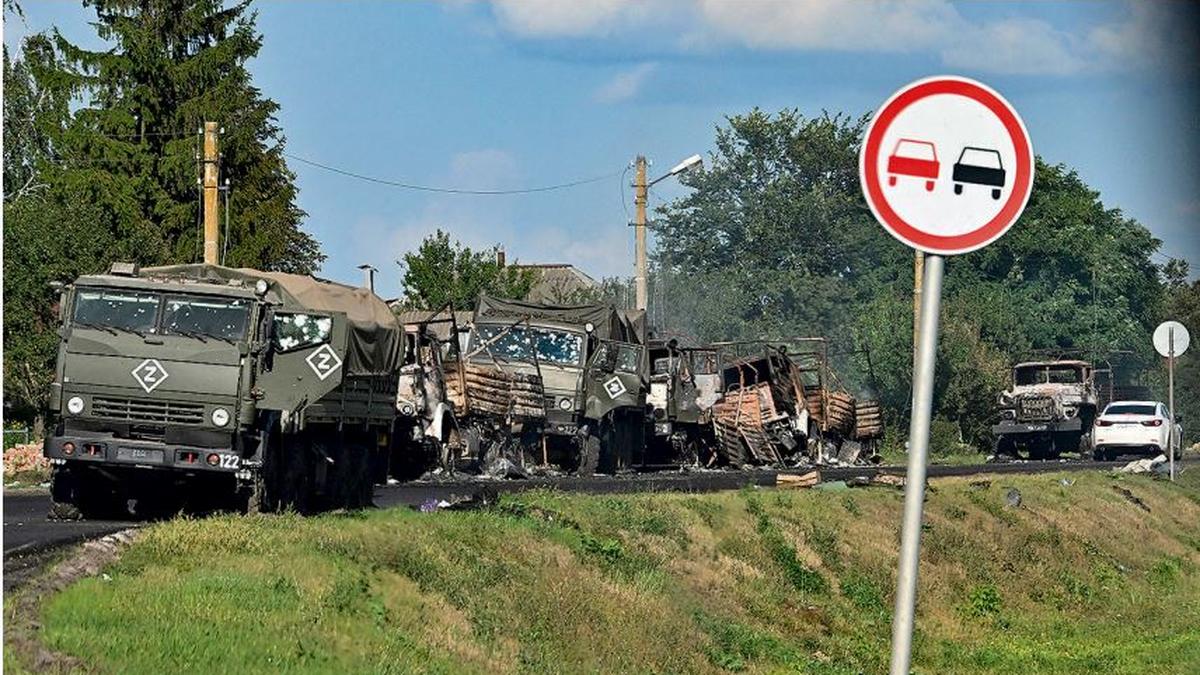The ongoing conflict between Russia and Ukraine has entered a new phase with Ukraine’s incursion into Russia’s Kursk region, marking the first occupation of Russian territory since World War II. This unexpected development has exposed vulnerabilities in Russia’s military posture and raised questions about Moscow’s priorities and capabilities.
Russia’s Limited Response to the Kursk Incursion
Despite the historical significance of the event, Russia has chosen to focus its military efforts on its primary objective: capturing the entirety of the four Ukrainian regions it illegally annexed in 2022. The Kremlin’s slow and low-key response to the Ukrainian advance suggests that it lacks the necessary reserves to adequately counter the incursion while maintaining its offensive in the Donbas region.
Prioritizing Donetsk Over Kursk
President Vladimir Putin views the collapse of the Ukrainian state as his ultimate goal and believes that securing the four annexed regions is paramount. As a result, the Kremlin has prioritised its offensive efforts in the Donetsk region, particularly around the strategically important city of Pokrovsk, where Ukrainian forces have built extensive fortifications.
Kremlin’s Downplaying of the Incursion
Facing the reality of the situation, Russian state media has sought to downplay the importance of the Kursk incursion. Instead of highlighting the military failure, state-controlled media focuses on government efforts to assist displaced residents and presents the attack as a demonstration of Kyiv’s aggressive intentions. This narrative aims to distract from the military setback and bolster support for the Kremlin’s actions.
Ukraine’s Tactical Move in Kursk
The Ukrainian incursion into Kursk is primarily a strategic maneuver designed to achieve several objectives:
Creating a Buffer Zone
Ukraine aims to establish a buffer zone to hinder Russian offensives and reduce the threat of attacks on Ukrainian territory. By securing a foothold in Kursk, Ukrainian forces can potentially disrupt Russian logistics and limit their ability to launch attacks from this region.
Embarrassing the Kremlin
The occupation of Russian territory is a significant blow to the Kremlin’s image and a potent demonstration of Ukraine’s capabilities. This tactical move has embarrassed the Kremlin, highlighting its vulnerabilities and raising doubts about its claims of military superiority.
Shifting the Battlefield Dynamics
By deploying a considerable number of its most capable forces to Kursk, Ukraine has shifted the dynamics of the battlefield. This move has diverted resources from the eastern front, creating opportunities for Ukraine to potentially advance in other regions.
Resource Constraints and Tactical Challenges
The Ukrainian incursion in Kursk has exposed several challenges and limitations on both sides.
Russia’s Limited Resources
Despite its military might, Russia is facing resource constraints in both manpower and equipment. This limits its ability to launch a significant counteroffensive against Ukraine’s incursion in Kursk. The Kremlin’s reluctance to call up more reservists stems from fears of domestic unrest and a repeat of the public backlash following the 2022 mobilisation.
Ukraine’s Logistical Challenges
While Ukraine’s incursion has yielded some strategic advantages, it also presents its own set of logistical challenges. Defending positions deep inside Russian territory would strain Ukraine’s supply lines and expose them to potential Russian attacks.
Future Scenarios and Considerations
The outcome of the incursion remains uncertain, and both sides face significant challenges.
Adapting to a New Battlefield Reality
The Kursk incursion has presented Russia with a new battlefield reality. The Kremlin’s stiff and hierarchical system may hinder its ability to adapt quickly to this unexpected development. The outcome of the incursion will depend on how effectively Russia can adjust its strategy and resource allocation to counter the Ukrainian advance.
Sustaining Ukrainian Presence in Kursk
The long-term sustainability of Ukraine’s presence in Kursk remains to be seen. Defending against a potential Russian counteroffensive with extended supply lines will be a significant challenge. Ukraine’s ability to secure its hold in Kursk will depend on its capacity to sustain the required logistical infrastructure and maintain a defensive posture against a potentially stronger Russian counteroffensive.
Take Away Points
- The Ukrainian incursion into the Kursk region has revealed vulnerabilities in Russia’s military posture and exposed the limitations of its resources.
- The Kremlin’s focus remains on securing the four Ukrainian regions it illegally annexed, prioritizing its offensive efforts in Donetsk over responding decisively to the incursion in Kursk.
- Ukraine’s incursion has embarrassed the Kremlin and highlighted the limitations of Russia’s military capabilities, significantly shifting the dynamics of the battlefield.
- The incursion has placed pressure on Russia to adapt its military strategy and resource allocation, presenting both sides with unique challenges and uncertain outcomes.
- The long-term implications of the incursion remain unclear, and its potential to influence the broader course of the conflict remains a subject of ongoing debate.




